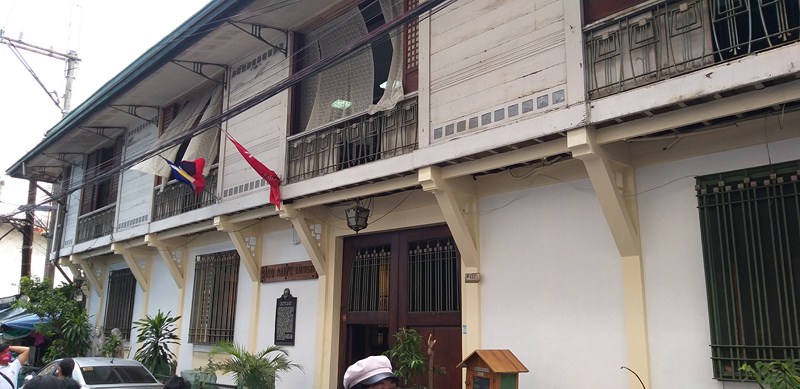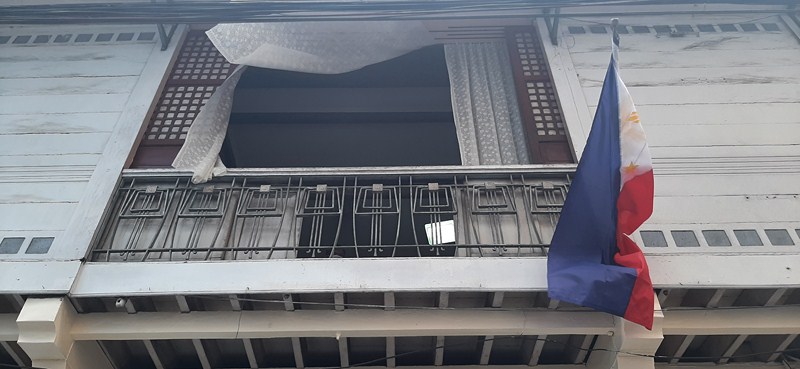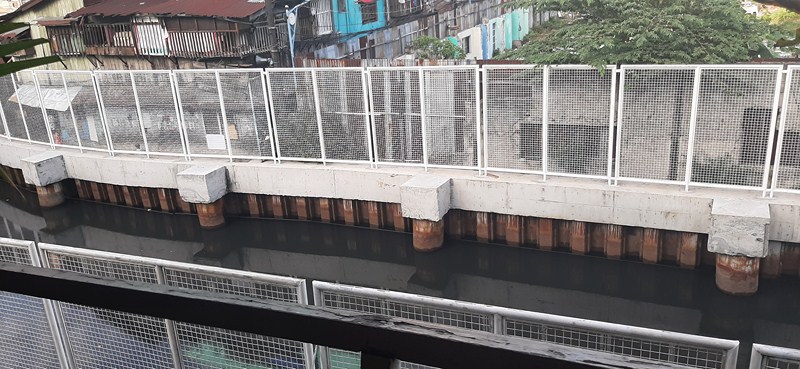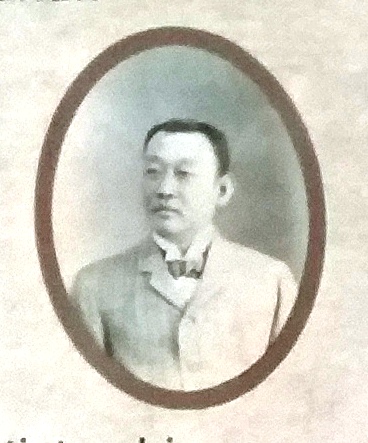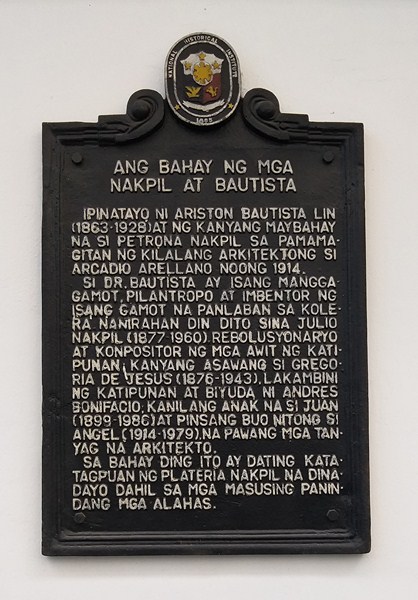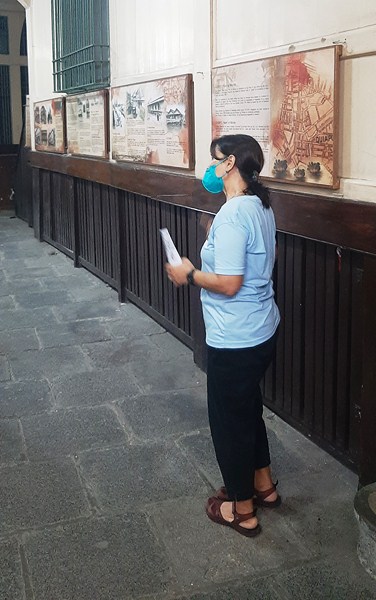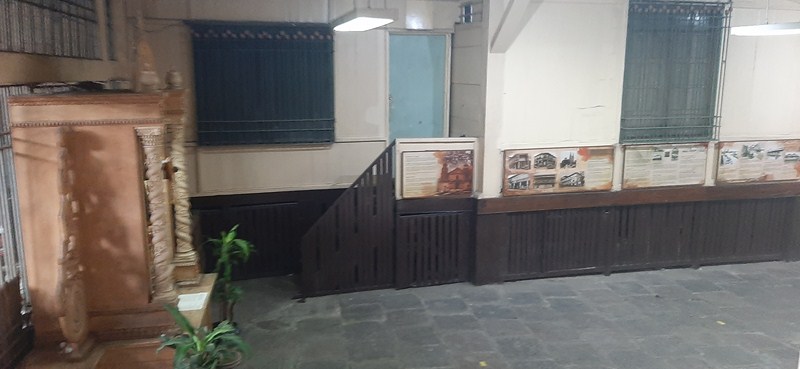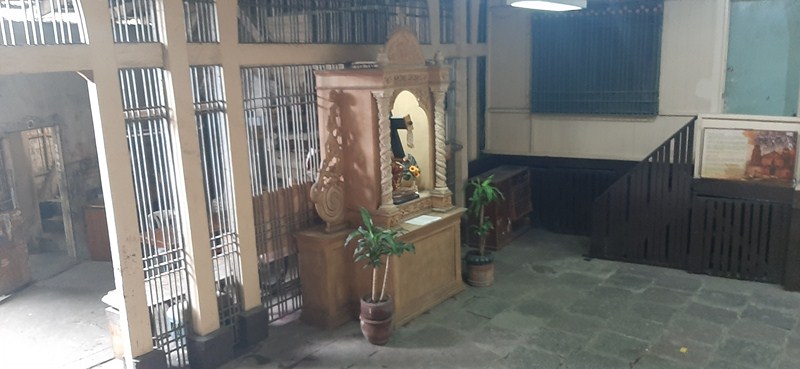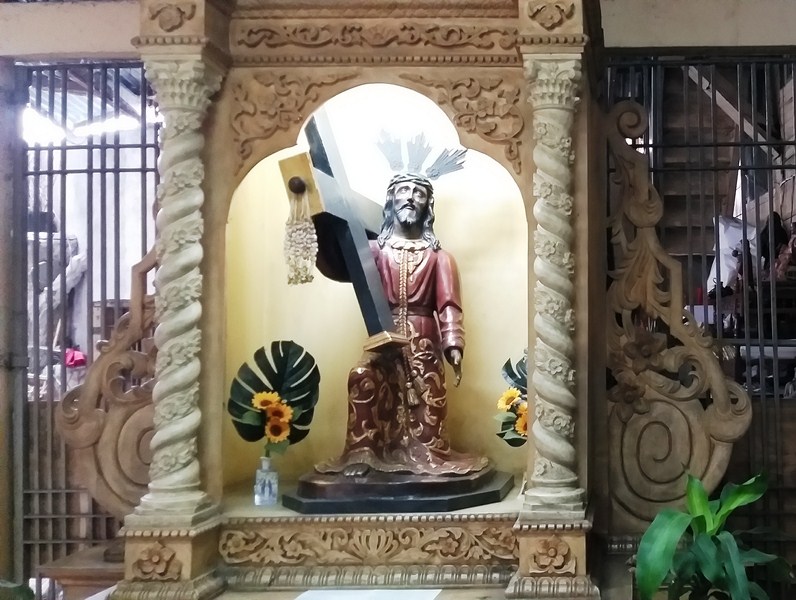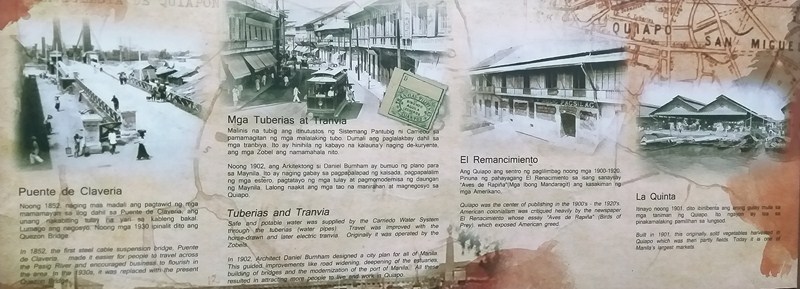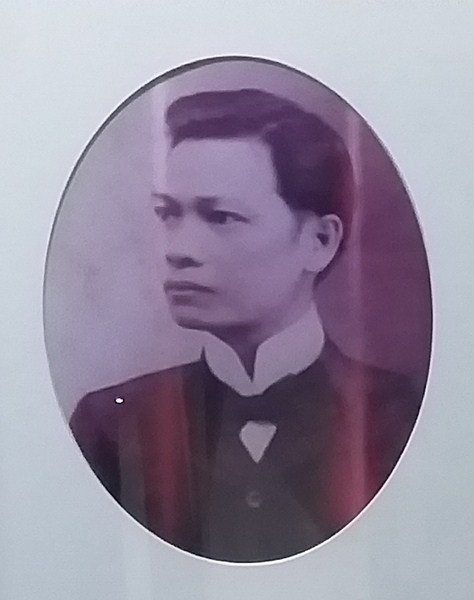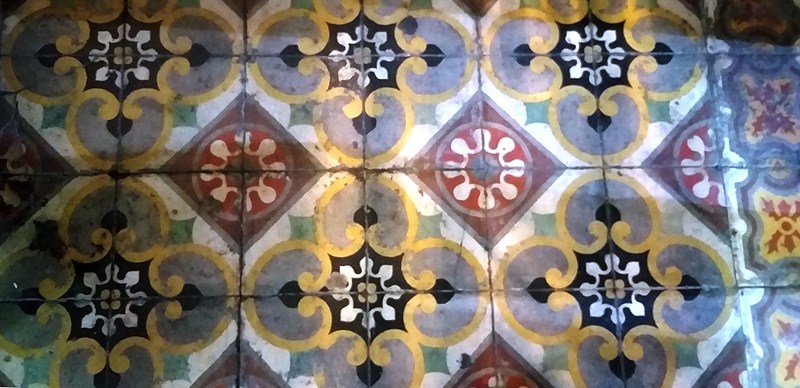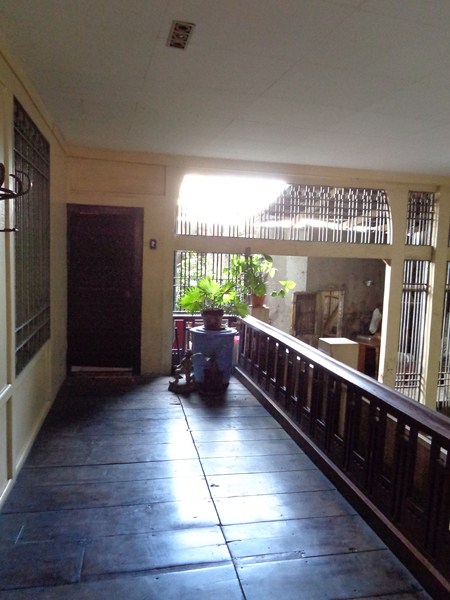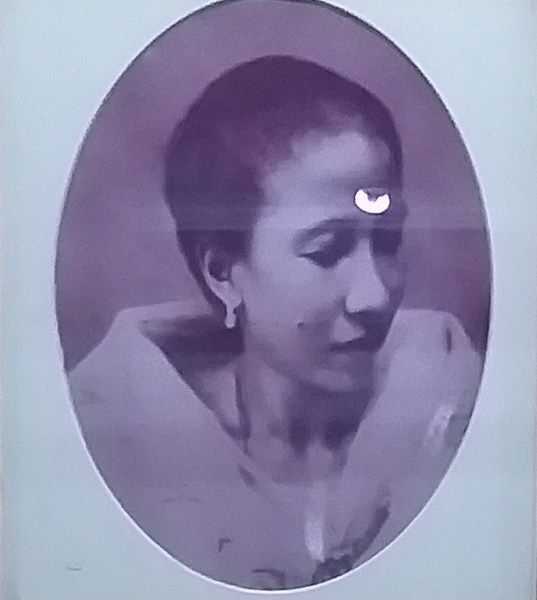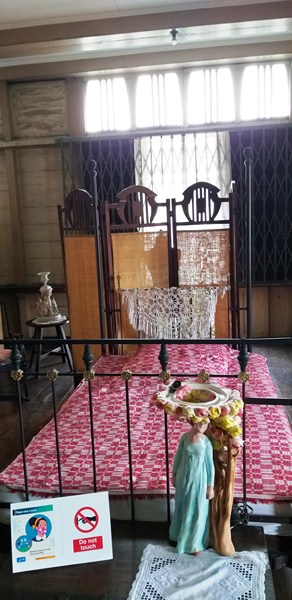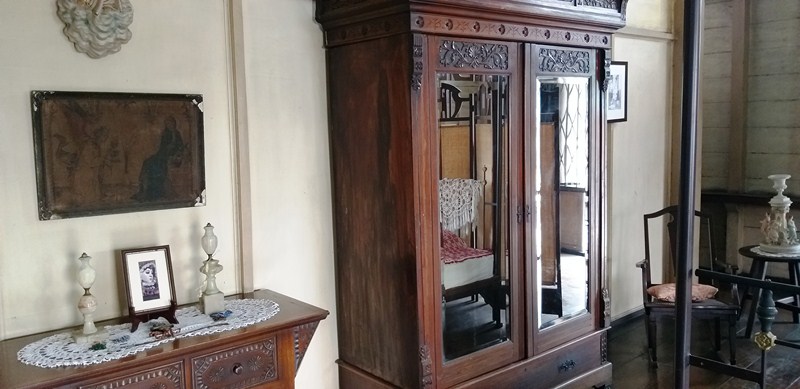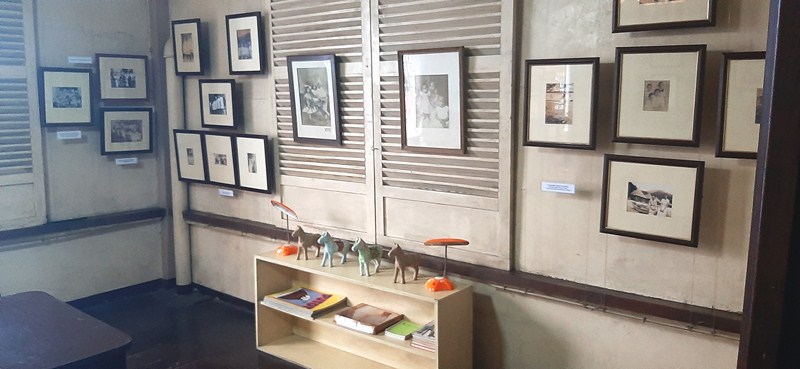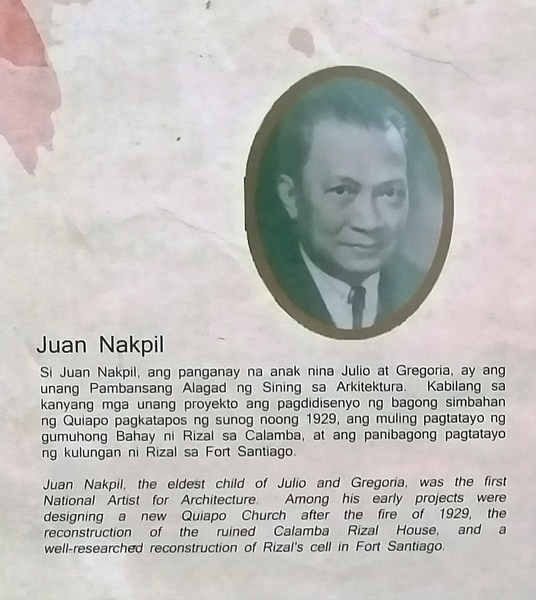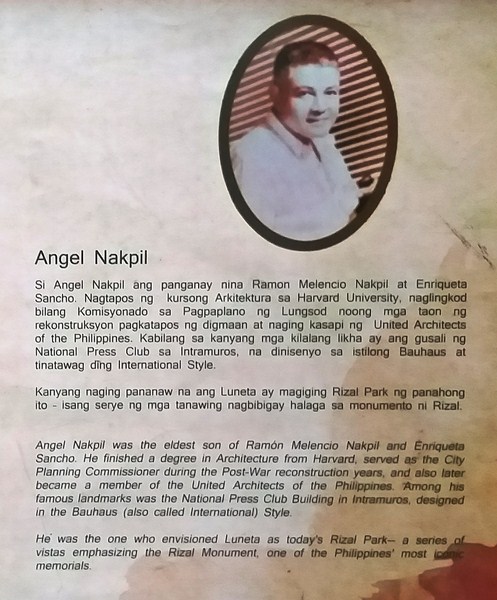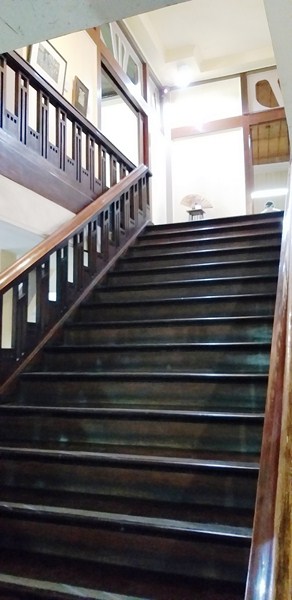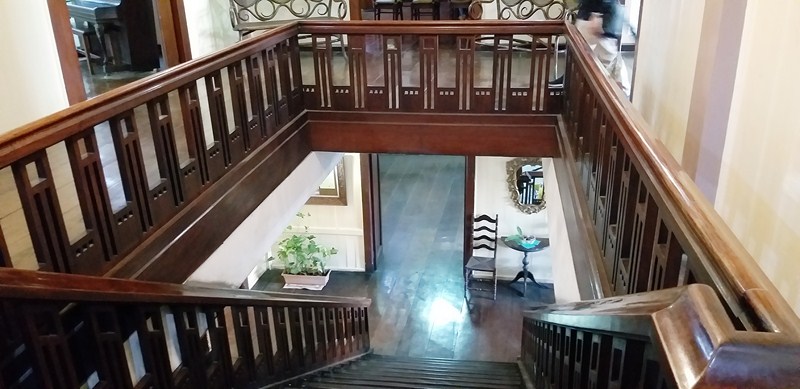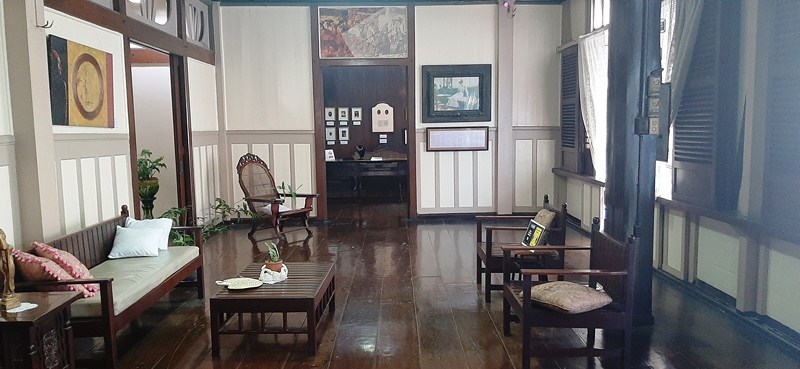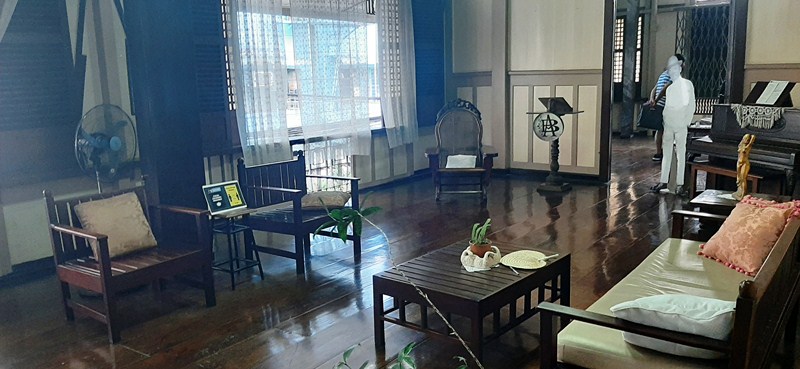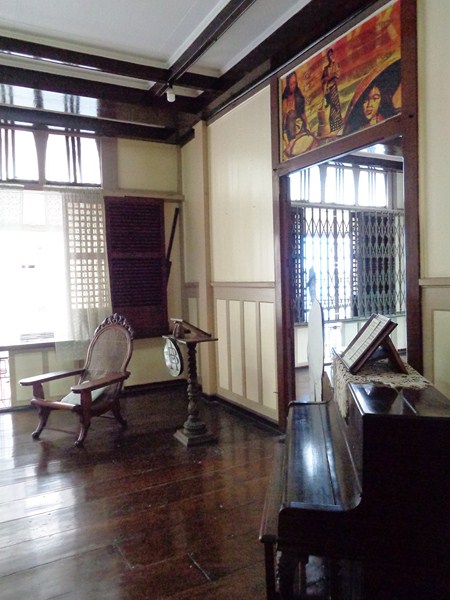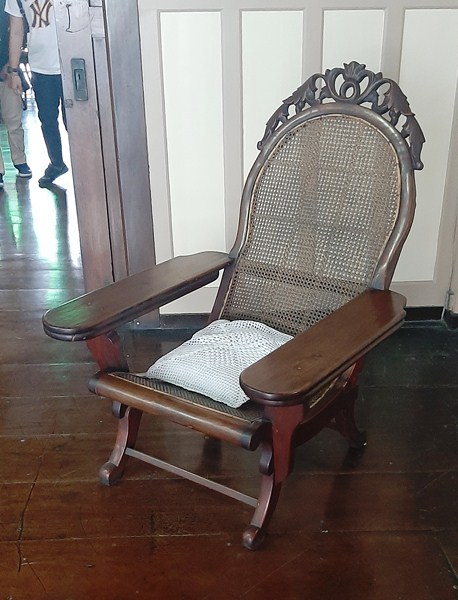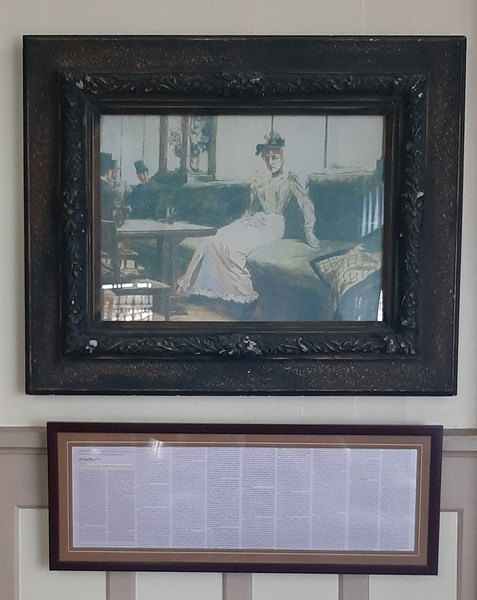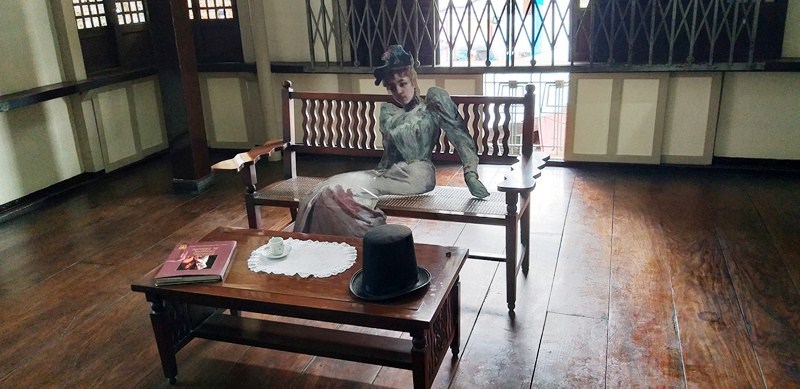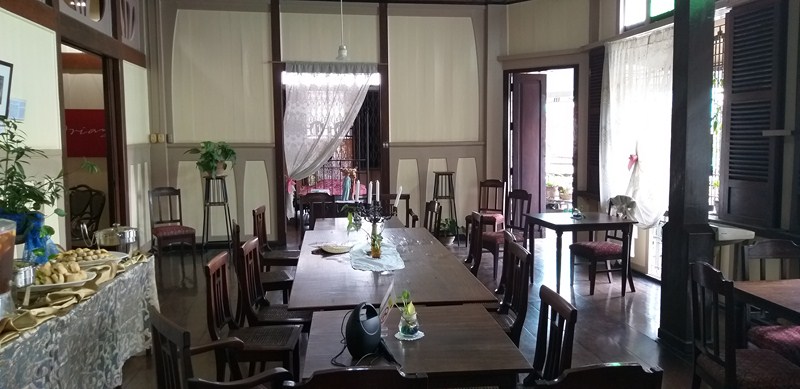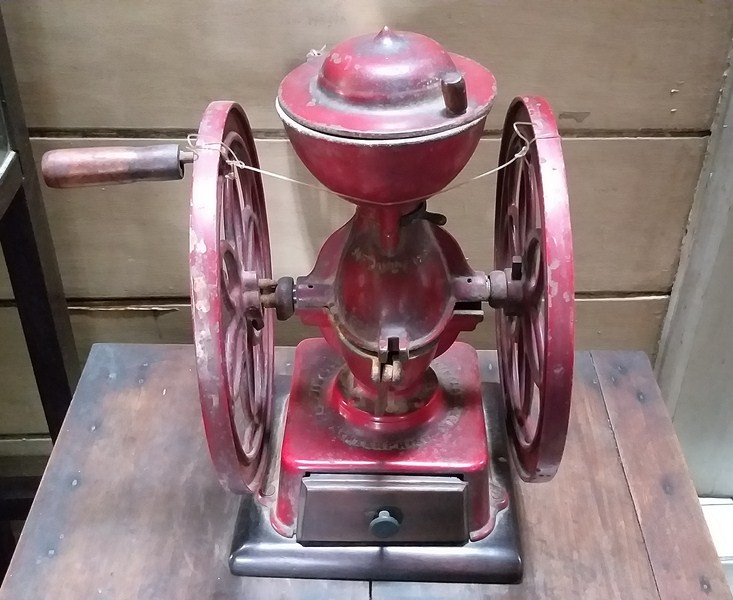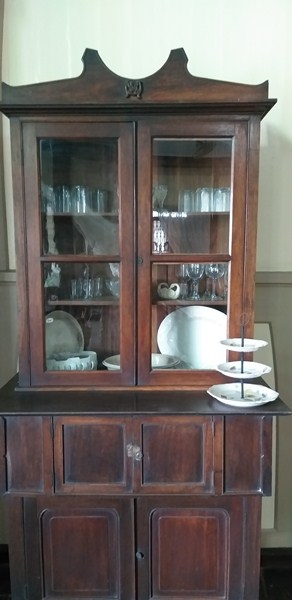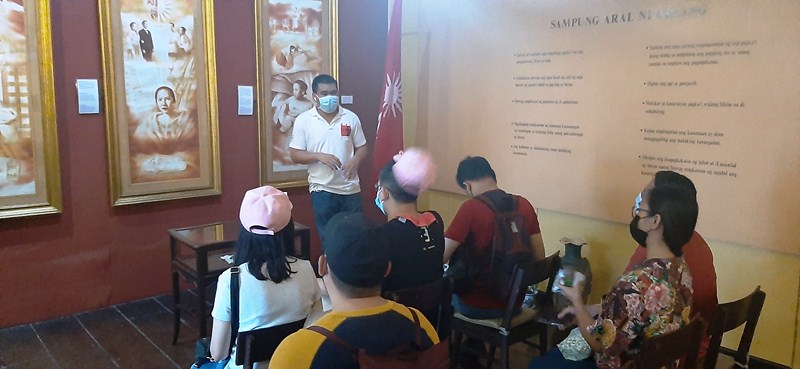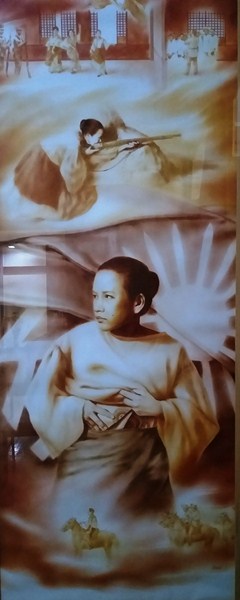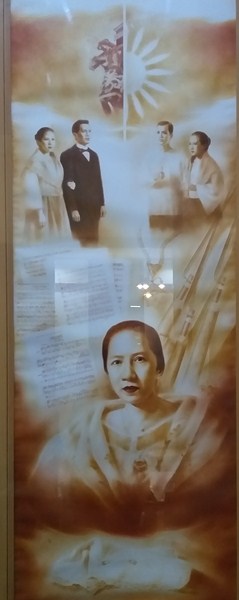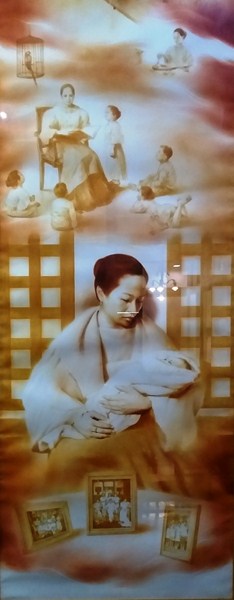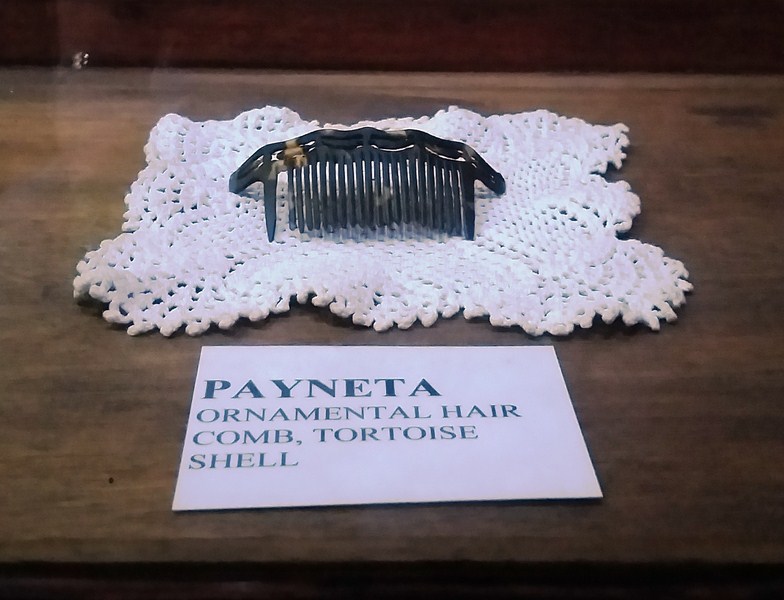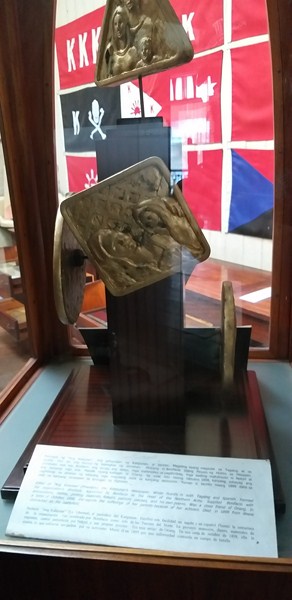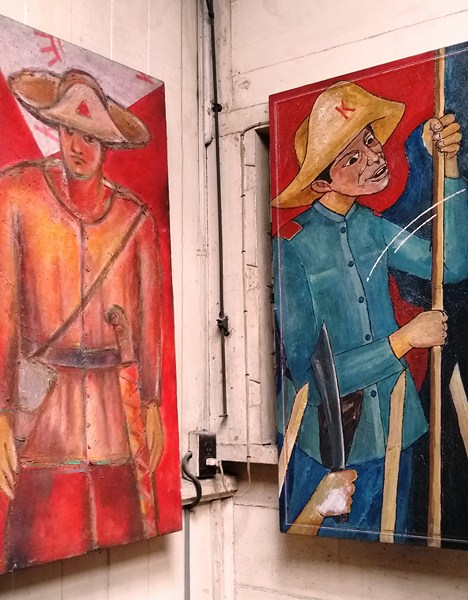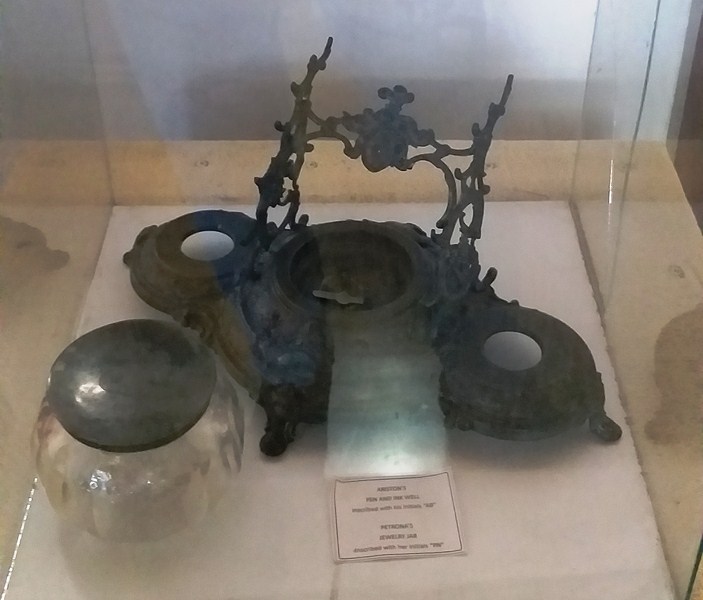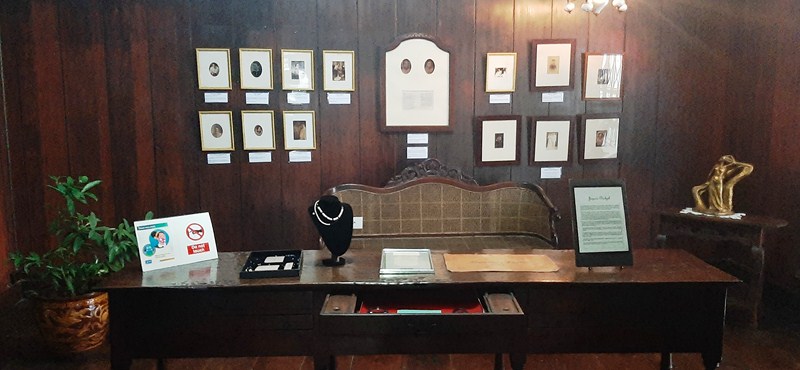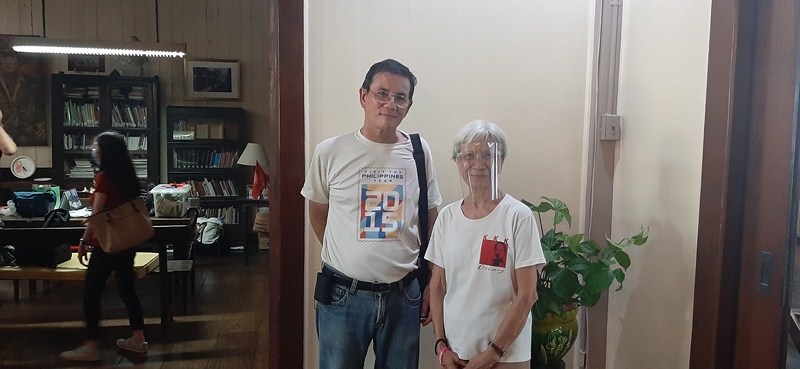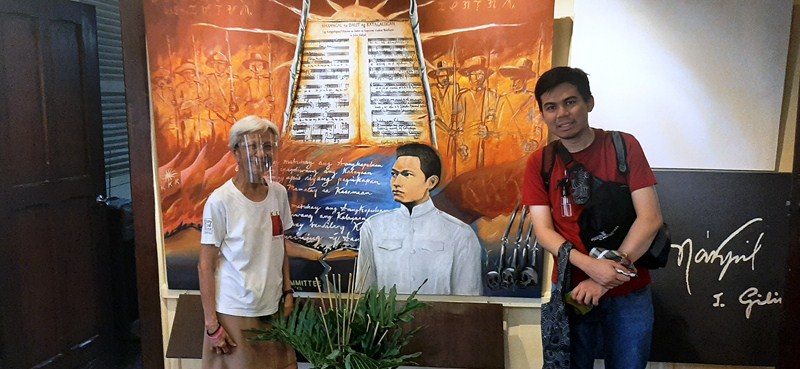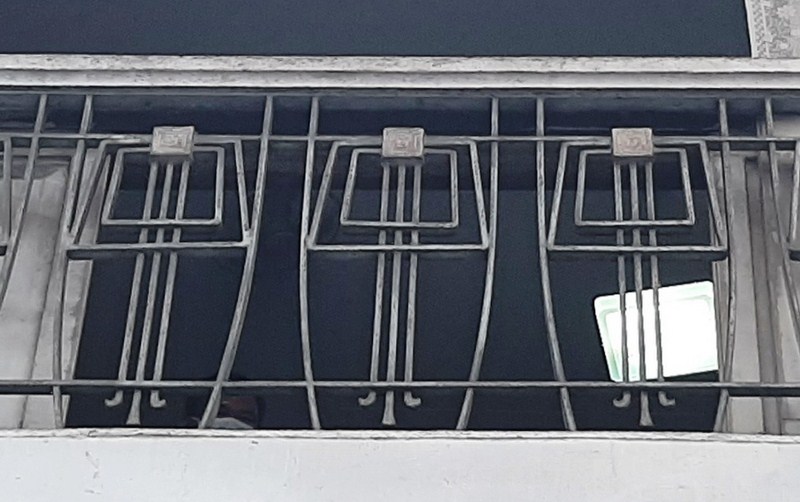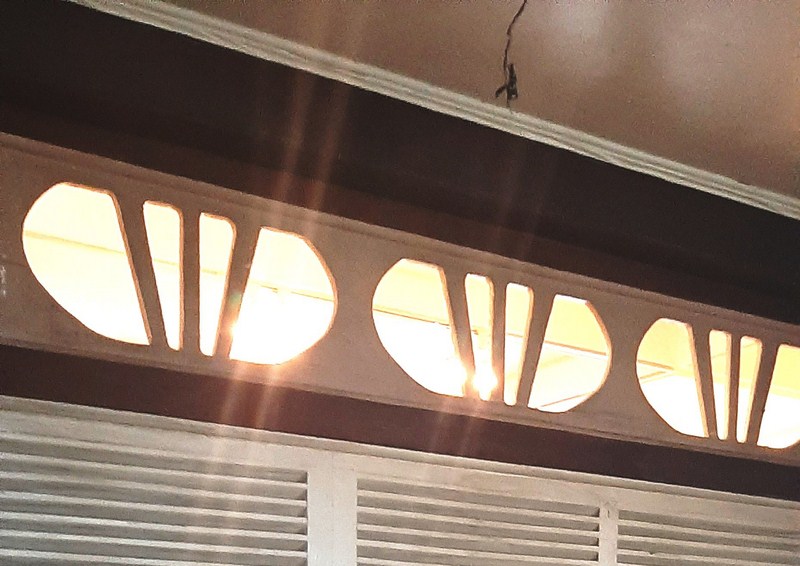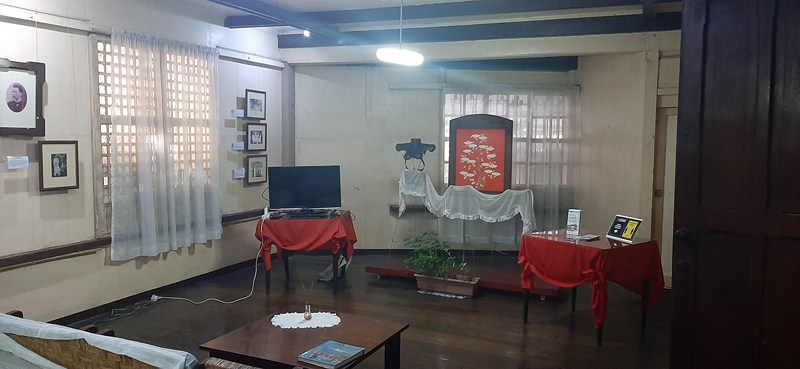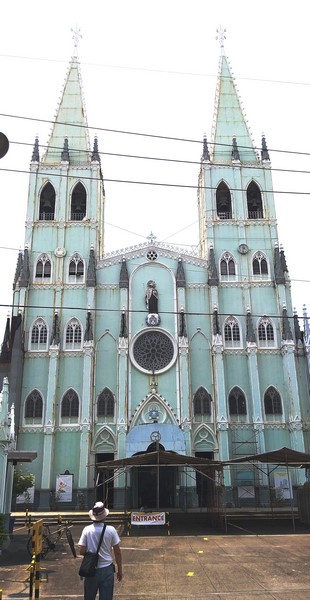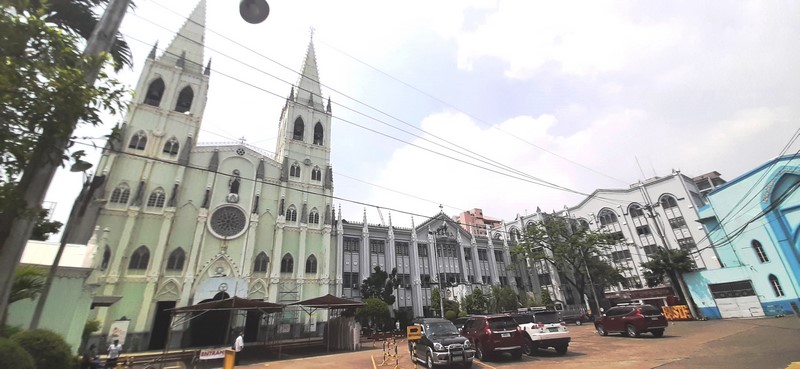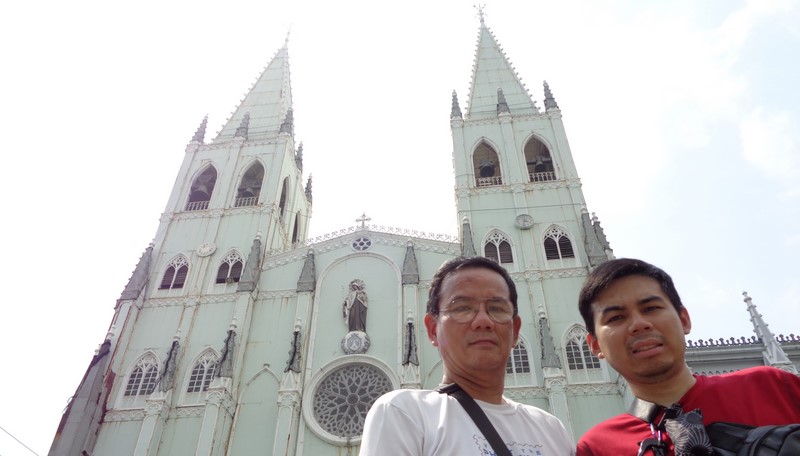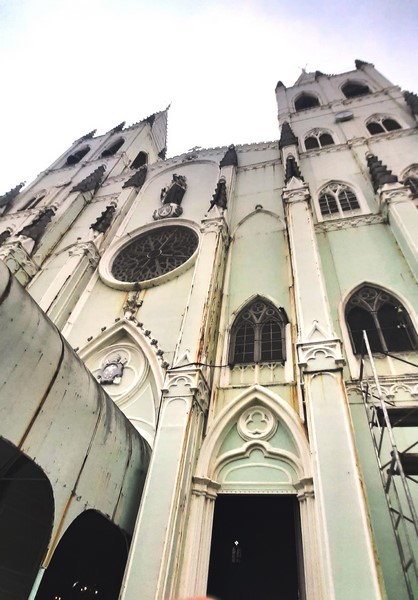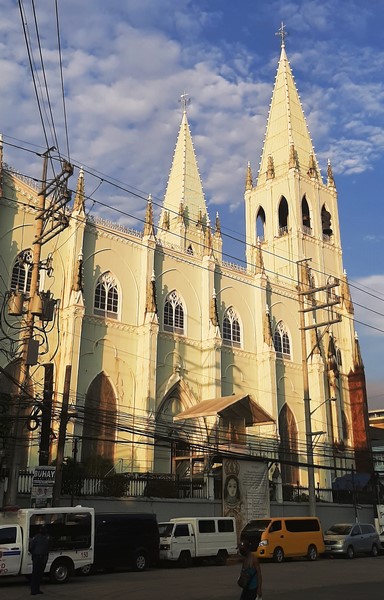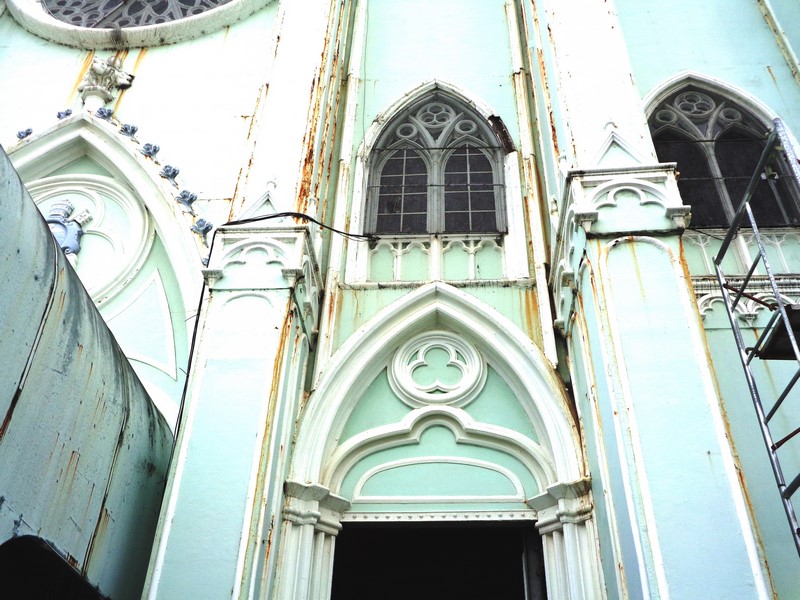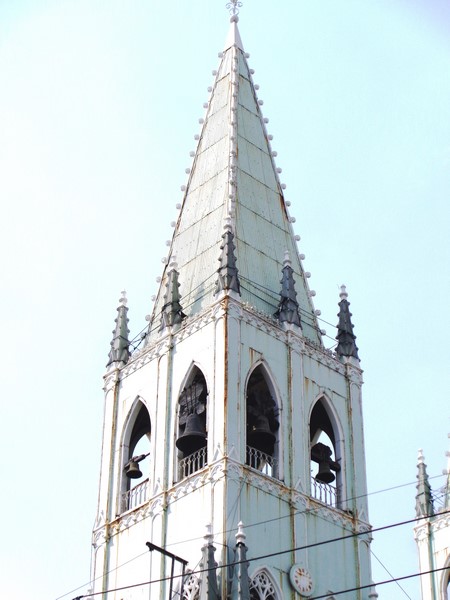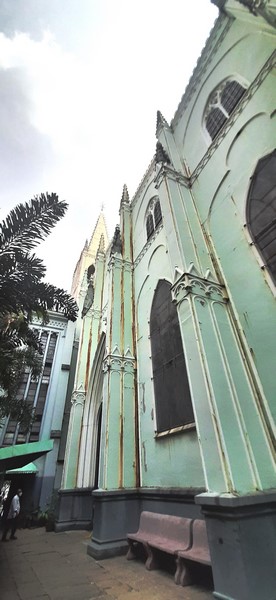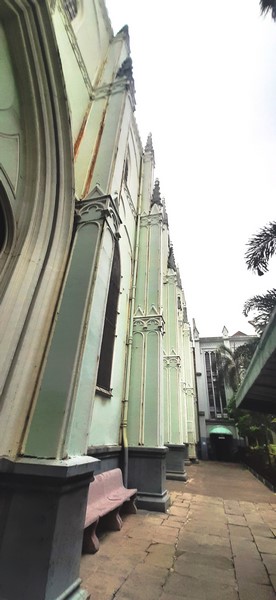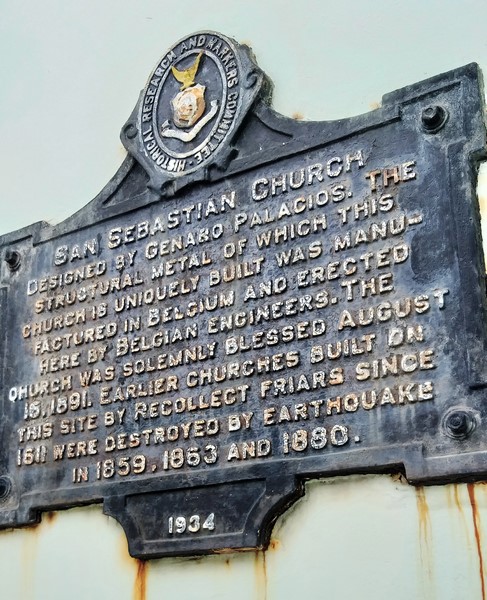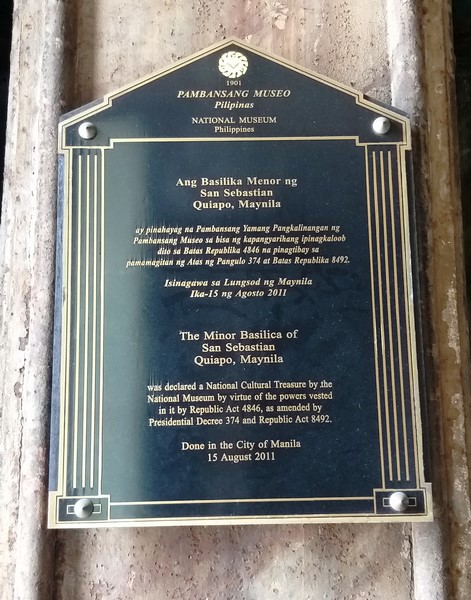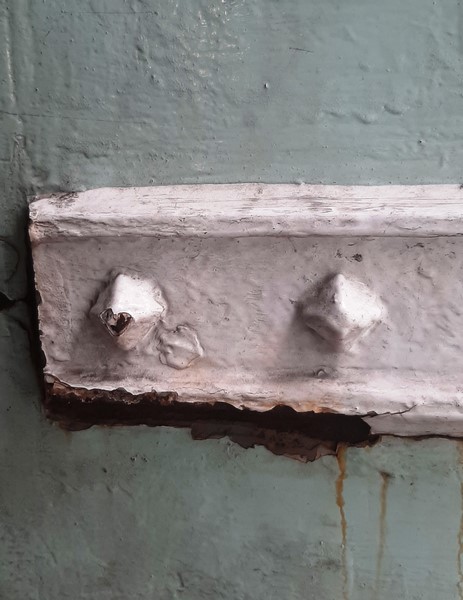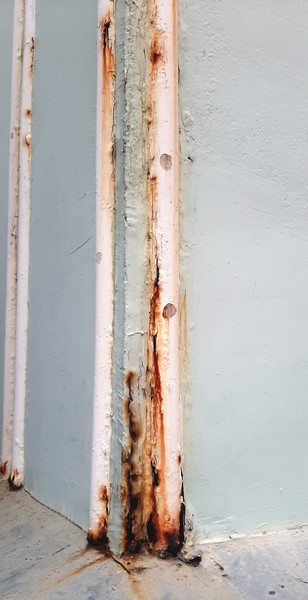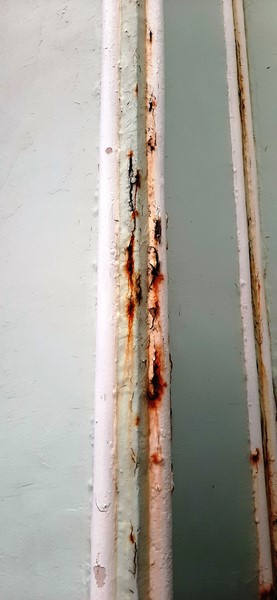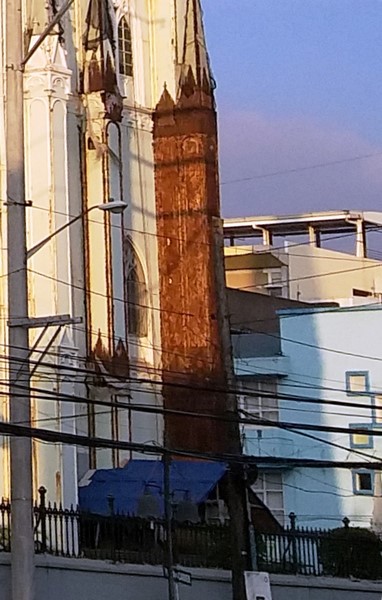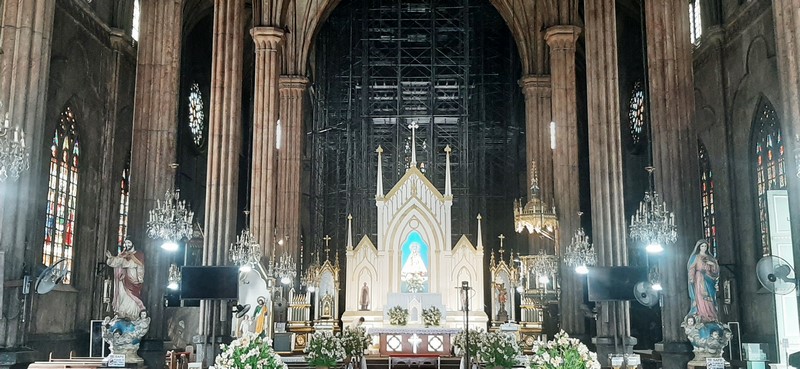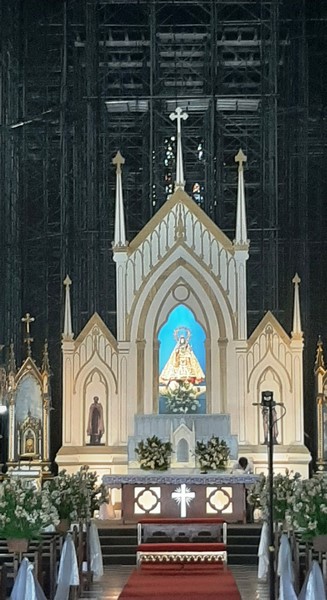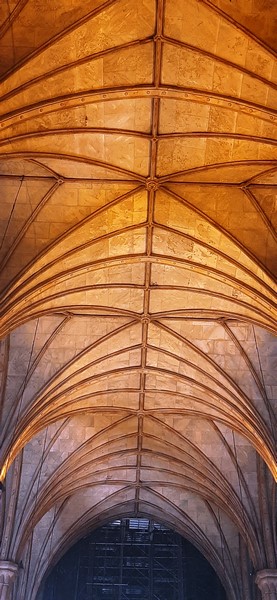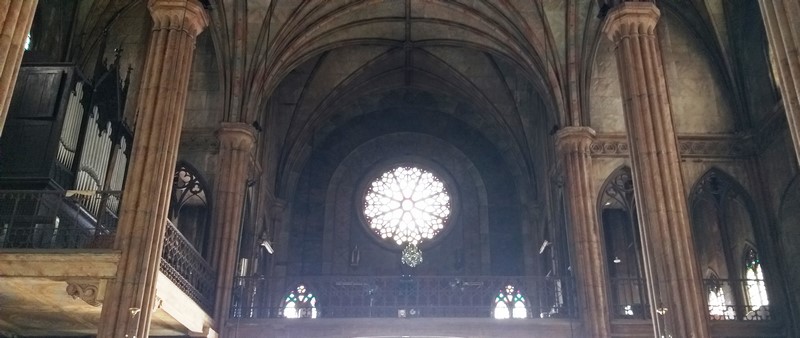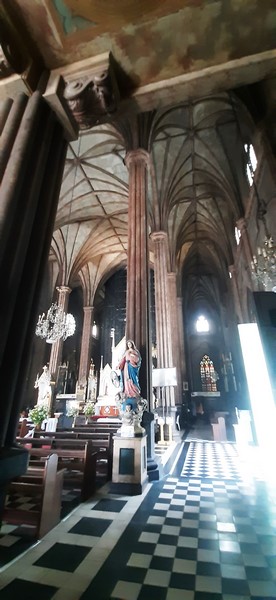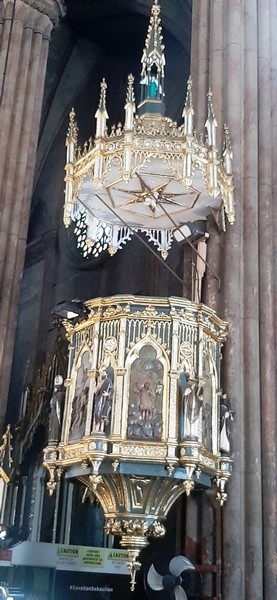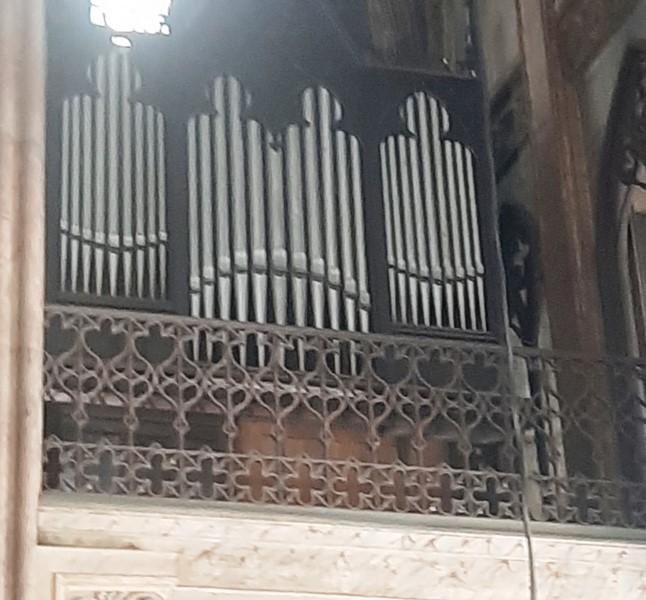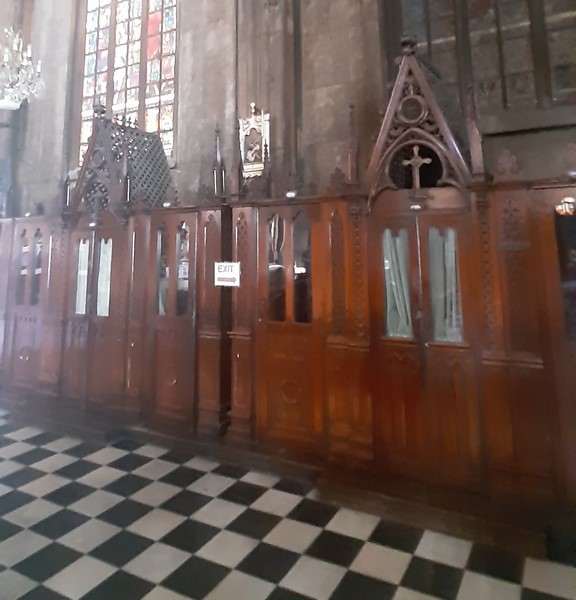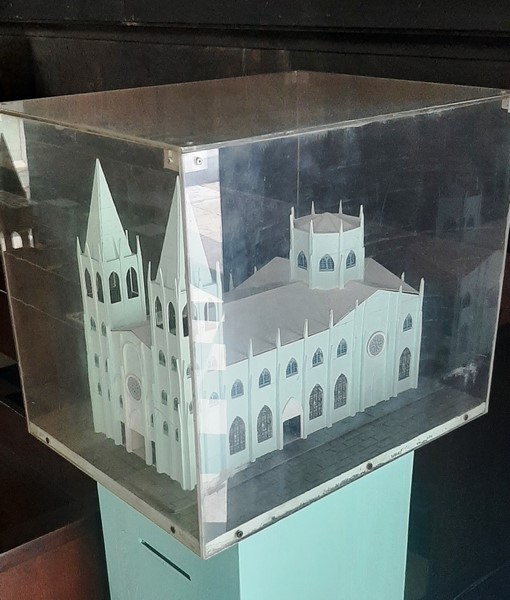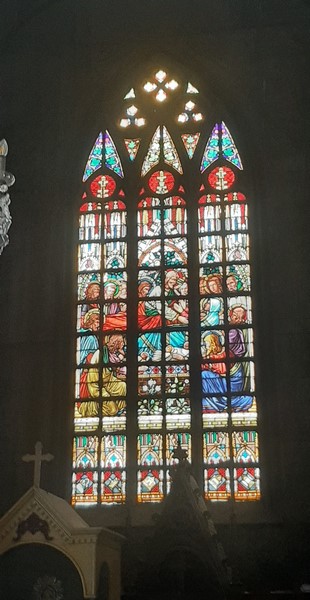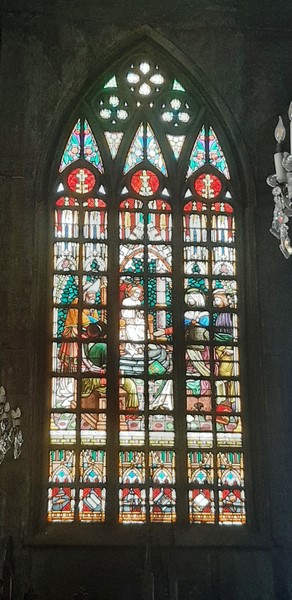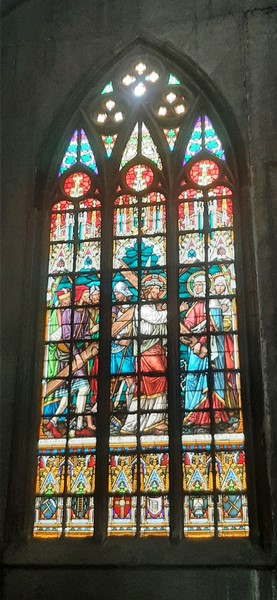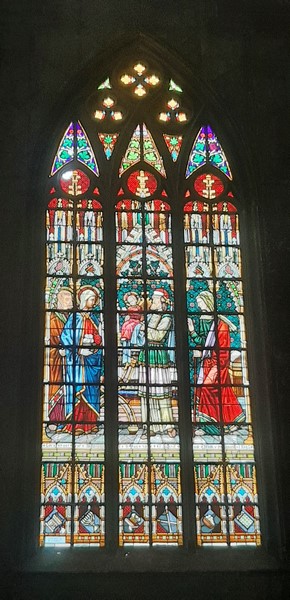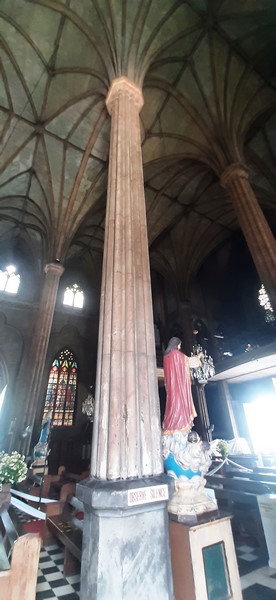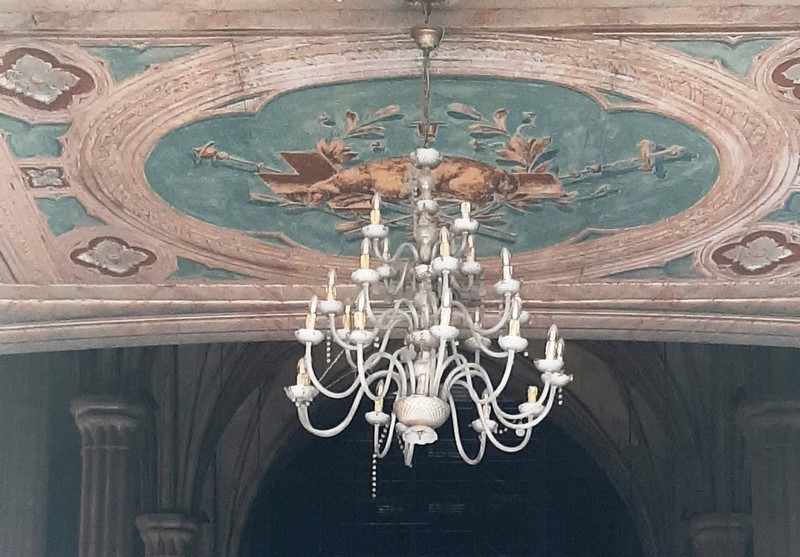Our Quiapo Heritage Walk ended at the stately and elegant Bahay Nakpil-Bautista (Nakpil-Bautista House), one of the old heritage houses found in the district of Quiapo, Manila. As it was still open, Jandy and I, as well as other participants of the Quiapo Heritage Walk, decided to explore it.
Check out “Quiapo Heritage Walk”
The house is typical of its period,with wood and stone as primary construction materials. Typical of many Manila houses of the period, it had two entrances–a large wooden street door (postigo) and a large iron gate that leads to the Estero de Quiapo behind.
A perfect example of “adaptive reuse” (where old structures find new life and new uses so they remain relevant to the present time), Bahay Nakpil-Bautista was a bahay na bato built in 1914 by Arcadio Arellano (architect of the Gota de Leche Building) for Dr. Ariston Linpingco Bautista (1863 – 1928), a known physician, patriot (he was a member of the Propaganda Movement), philanthropist and patron of the arts.
Check out “Gota de Leche Building: A Heritage Conservation Success Story”
Dr. Ariston Bautista was also one of the first professors in the University of the Philippines College of Medicine. He discovered a treatment similar to paregoric, which helped end the cholera epidemic that plagued the country in 1880. He was also the founding President of Germinal Cigar and Cigarette Company. His wife, the painter and jewelry designer Petrona Nakpil, was one of the first women artists in Quiapo.
Originally, there were two houses sitting on two lots (with a total area of 500 sq. m.). On August 25, 2011, the National Historical Commission of the Philippines declared the house as a National Historical Landmark.
Today, the house is a museum showcasing items of the Katipunan, paintings, among others. After a long closure due to the COVID pandemic, the museum reopened last November 30, 2021. The exhibits were set up by architect Dr. Mary Ann Venturina-Bulanadi, a UST interior design professor, interior designer and cultural heritage restorer.
We first entered the lower storey of the house, with its thin (21 cm.), narrow, brick walls pressed together by wooden studs.It now houses the Tahanan ng mga Katipunero, a permanent exhibition which was curated and opened in 2014, during the 100 years celebration of the house. Before that, the house used to be a dorm, a halfway house and even a pansiteria.
Upon paying the admission fee, we were assigned a lady volunteer guide for our 45-min. tour. The cavernous zaguan or garahe (parking area for horse-drawn carriages and, later, cars) has flooring made of piedra china (stones used as weights in trade ships that disembarked in Manila). A mirror, a traditional innovation (similar to a modern-day CCTV camera), was propped on the ceiling (near the wooden guide), enabling the house occupants to see anyone standing outside the door.
On the farthest side was a replica of the original Black Nazarene (Nazareno) statue of Quiapo Church which was brought to the zaguan areaof Nakpil-Bautista House during the bombings of World War II to prevent it from being destroyed or looted. Behind the statue was the plateria (old workshop for designing jewelry).
Bahay Nakpil-Bautista was the home of fine jewelry makers (Plateria Nakpil). Before World War II, he atelier’s artisans handcrafted outstanding pieces of gold-and-diamond jewelry (such as Art Deco, flower-inspired pieces set in white gold) which were highly prized by Manila society from the 1900s until it closed in the 1960s.
Visual aids also illustrate the history of Quiapo and its notable landmarks, some still existing and others long gone, such as the Quiapo Church, Puente de Claveria, Tuberias,Tranvia, El Renacimiento, La Quinta,schools, the Enriquez and Santiago Houses, Golden Mosque, Life Theater and Main Theater.
Ariston and Petrona were a childless couple so they invited her brothers Julio and Ramon, with their families, and Francisco (a life-long bachelor) to share the house. Francisco Nakpil (1865 – 1906), an expert platero (silversmith), was a member of the reform movements La Liga Filipina and Cuerpo de Compromisario.
Machuca tiles from Mexico led us to a short flight of stairs going up to entresuelo (raised area or mezzanine floor) whose the cuarto (bedroom), sala (living room) and patio served as the residence of musical composer Julio Nakpil (1877 – 1960)
Julio was the president of the Northern Council of the Katipunan who was a pianist who composed Marangal ng Dalit ng Katagalugan (“Noble Hymn of the Tagalog Nation,” this would have been the national anthem had Andres Bonifacio lived to be president).
After Bonifacio’s death, he married his widow Gregoria de Jesus (1873 – 1943), organizer of the women’s chapter of the Katipunan (nicknamed Oryang, she was the “Lakambini” or First Lady of the Katipunan).
Gregoria and Julio had six children. The children’s room, with persiana (sliding louvered panels), has now been converted into an activity area for local kids where they can read books and listen to stories.
Juan Felipe Nakpil (1899 – 1980), their son and godson of Francisco, was the architect of Quiapo Church after the 1929 fire. In 1973, he became a National Artist for Architecture. At the southern side of the zaguan, a staircase leads to another suite of apartments where Ramon, Julio’s youngest sibling, lived with his family.
According to our guide, the house was not called Tahanan ng mga Katipunero because it was a meeting place of the Katipuneros. Instead, it was called such because it was the home of these key figures in Philippine history. Other prominent people who lived there include Angel Nakpil (1914 – 1979), the first cousin of Juan, who was the architect of the National Press Club Building and the Picache Building (Manila’s first skyscraper).
Visual aids at the zaguan also tell the story of these famous house residents. After our tour of the ground floor, we all proceeded to the descanso (main stairway landing), then went up to the caida (hall) of the second floor (measuring 22.45 by 15.9 m. excluding the kitchen and azotea) which was built with wood (to resist earthquakes), aired by large calados and shaded by sufficient media aguas. Two orchestras (the doctor loved to throw parties) could play in the public rooms.
In the past, ladies who ascended the stairs would have to carry the extended hems and frills of their saya over their arms. Upon reaching the top steps of the caida, they would make their grand entrance by letting down (incidentally, the word caida means “fallen”) the trains of their dresses and then wait at the ante sala (anteroom) before they could proceed to the sala or comedor.
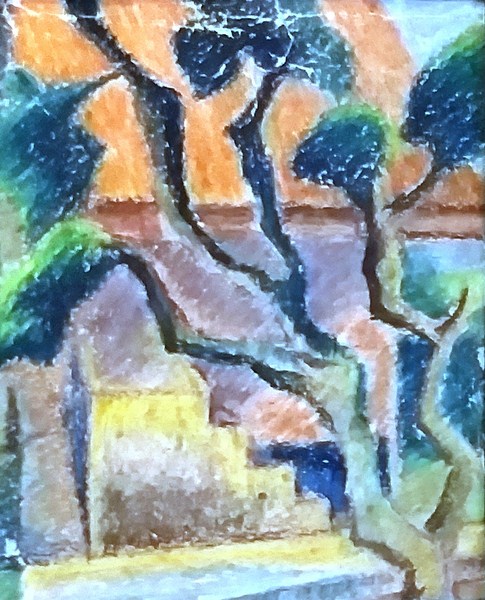
The Red Roof (1971, crayon on collage) by Fernando N. Zialcita, son of Mercedes Nakpil-Zialcita, daughter of Julio
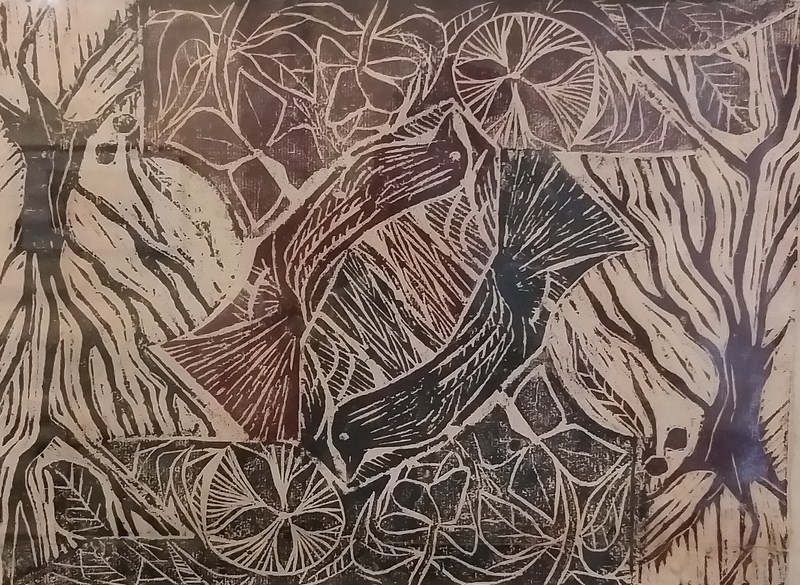
Two Forest Birds (1964, print woodblock) by Milagros Sy Faustino, daughter of Caridad Nakpil Santos-Viola,
The house is also decorated with contemporary works of art by Ral Arogante, Egai Roxas, Fidel Sarmiento, and Manny Garibay as well as Nakpil descendants such as Assunta Nakpil, Mark L. Mallari, Caridad Nakpil Santos-Viola, Fernando N. Zialcita, Arlene de Castro, Francisco J. Nakpil, Tapales, Maria Milagros Sy Faustino and Dominic Sy Faustino.
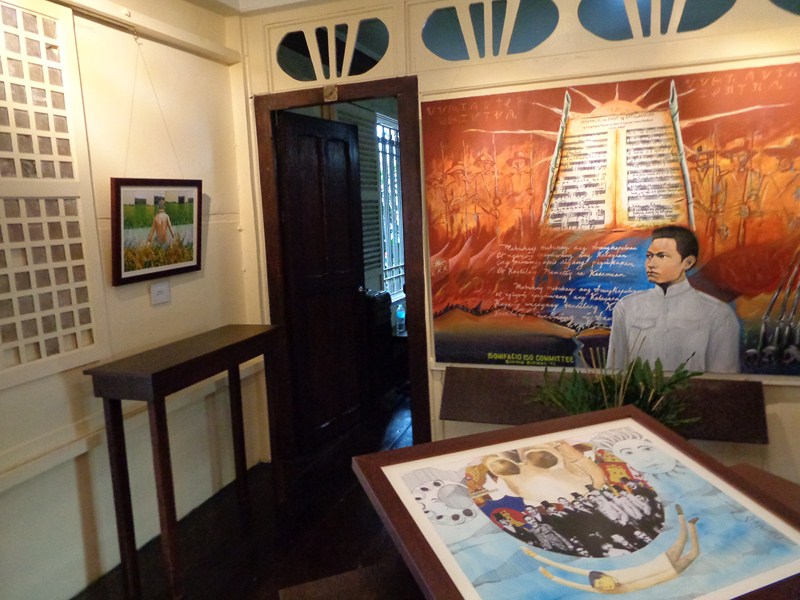
Exhibit of Ding Royales paintings. In the foreground is “Sueno Eterno” while on the left is Cefiro, 1888 (15 x 20, mixed media – collage)
One room displays a number of paintings of Marcos Antonino “Ding” Royales XI, a volunteer artist for Bahay Nakpil-Bautista since 2013. He also conducts art classes there.
The hall had doors on all four sides leading to the surrounding rooms – the comedor (dining room), sala (living room) and the two suites of cuartos (bedrooms).
Two sets of doors slide, like Japanese shoji screens, on sills, to be pushed on the sides, creating a wide room with a series of doorways opening vistas extending from street to the estero behind the house.
The wide exterior window, made of Philippine hardwood with capis shell panes, brought in plenty of light. Ventanillas allow air to circulate at feet level.
Juan Luna’s celebrated Impressionist painting, “The Parisian Life,” a gift of Juan Luna to Dr. Ariston Bautista, was originally displayed on the wall of the sala. The original painting, formerly displayed at the GSIS Museum, is now at the National Museum of Fine Arts.
Today, in its place, a reproduction hangs in the same spot while a life-size cut-out of the lady in the painting, identified as a courtesan or prostitute (representing “fallen womanhood”), is seated at the sofa.
Check out “National Museum of Fine Arts”
The comedor houses an antique 24-pax dining table and display cabinet with fine china. It leads to azotea overlooking the estero where, during formal dinners, the children had their own table.
The nearby pantry houses an antique, hand-cranked coffee grinder and hand-carved kitchen utensils such as kutsaron (small dipper), sandok (medium dipper), sandok sa kawa (large cauldron dipper), sandok (ladle), panghalo (cauldron ladle), palu-palo (mallet), paleta (spatula) and a salaan (srainer), all belonging to Oryang.
Here, one could simply shout out to peddlers on passing provincial cascos (merchant boats) when interested in buying their goods. Oryang would also fish at this then clean and abundant Pasig River estuary.
The Dambana ni Oriang has three oil on paper paintings, done by Fred Esquilo, of Gregoria de Jesus-Nakpil.
The first painting, Ang Rebolusyonara (The Revolutionary), highlights her role as a revolutionary and keeper of the Katipunan’s documents.
The second painting, Ang Dalawang Kasal (The Two Marriages), highlights her role as wife to Andres Bonifacio and Julio Nakpil.
The third painting, Ang Ina (The Mother), highlighted her role as a doting mother who loved to cook.
It was said that she could recreate a dish after she had tasted it just once. Framed reproductions of hand-written recipes of her morcon are hung on the wall.
She is also portrayed reading to her grandchildren stories from Mga Kuwento ni Lola Basyang (published in Liwayway Magazine) at the azotea of their house.
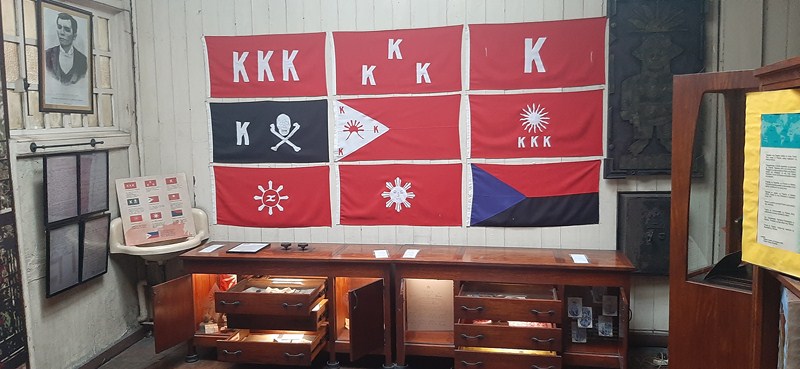
The library, now the Bulwagan ng Katipunan, with flags of the Katipunan and a portrait (left) of Andres Bonifacio on the wall. The table doubled as the Katipunero’s ballot box.
The library, now the Bulwagan ng Katipunan, displays paintings, by the Contempo group, of Katipunero soldiers; vitrines showcasing the Kartilya ng Katipunan, a collection of Katipunan flags, documents written in blood, a vintage safe, a sky roof; plus other memorabilia of the revolutionary movement.
A timeline cabinet here shows the Philippine Revolution vis-a-vis the democratic revolutions in the West and Asia .
Furniture within includes an interesting table which doubled as the Katipunero’s ballot box, and three chairs where Andres Bonifacio, Apolinario Mabini and Jose Rizal sat when the La Liga Filipina was founded in 1892.
The Joyeria Nakpil (southwest corner room), the oficina (office) next to the library, used to be the office for the Nakpil’s jewelry business. Here, Petrona , who handled customer relations and sales for Plateria Nakpil, would meet clients in this special room.
During our tour of the second floor, we met and chatted with Ms. Ma. Paz “Bobbi” Nakpil Santos-Viola, current president of Bahay Nakpil-Bautista Foundation, Inc., who now manages the house. She used to work at the United Nations (UN) headquarters in New York City, USA but decide to return to the Philippines over 10 years ago.
She is also the middle daughter of Caridad Nakpil Santos Viola, the youngest daughter of Gregoria de Jesus and Julio Nakpil. Her father, Carlos Santos Viola, the nephew of Maximo Viola, is known and recognized for his Gothic-inspired Iglesia ni Cristo houses of worship.
The house does not have ornate decorative details. Its inspiration is the Vienna Secession, a 1900s European art movement style with a contemporary character not well known in the Philippines during this time. The Austrian version of Art Nouveau, it was made known by Gustav Klimt and Otto Wagner. It encouraged plurality and favors clean lines, symmetry and geometry.
Natural forms, such as vines and flora, were reinterpreted in a very linear manner and abstract fashion than the representational, curvilinear forms of the Art Nouveau preferred by Filipinos. After Ariston Bautista and Petrona received a gift, from the Prieto family, of Secession furniture (high-backed chairs, low sala table, a desk, vitrines and glass-walled cabinets to display porcelain and crystalware), Ariston asked Arellano to designed their entire house around the furniture motifs.
The window grilles, overlooking the estero, have vertical floral stems with flowers sized to small squares. The ventanillas (grilles) facing the street display abstract interpretation of the highly stylized lyres. The upper exterior wooden wall, as well as the wooden stair railings and window grilles, are simply decorated with a band of small, recessed square insets on long vertical bars. On the calado (tracery) of the interior transom walls are abstract interpretations of the kiyapo plant.
After the house was finished, Dr. Bautista designed new furniture with the same motifs and had them executed by his Pampango carpenter in residence. However, in the 1970s, these original furniture were divided among the heirs. Some of the present pieces were commissioned to suit the museum’s purposes.
Today, the Bahay serves as an arts and culture space for select events (Php4,000 for two hours, inclusive of electricity and water), photo shoots and activities for the community, hosting cultural performances, lectures, and discussions on history and heritage, and art exhibits. The type of event to be held is studied to ensure that it is respectful to the house’s history.
Bahay Nakpil-Bautista: 432 A. Bautista St.(formerly Barbosa St.), Quiapo, Manila 1001.Tel: (632) 8731-9305. E-mail: info@bahaynakpil.org. Website: www.bahaynakpil.org. Mobile number: (0917) 851-7455. Open Tuesdays, Thursdays and Saturdays (except holidays), 9:30 AM to 4:30 PM. Admission: Php80 (Php50 for senior citizens and students). Coordinates: 14.598404°N 120.984739°E.
How to Get There: Board a jeepney bound for Quiapo and get off at the corner of Hidalgo St. and Quezon Blvd.. Walk towards Hidalgo St. (east side going to the Minor Basilica of San Sebastian) and then turn left at A. Bautista St..

